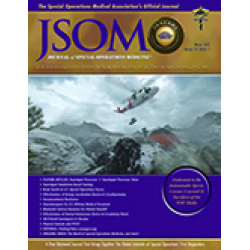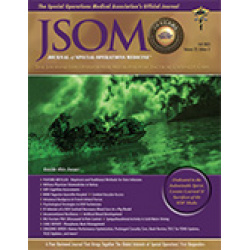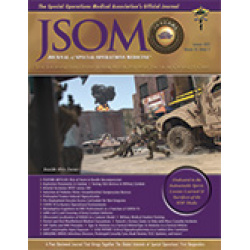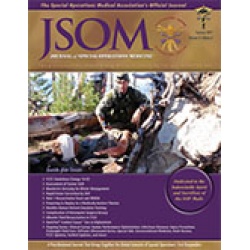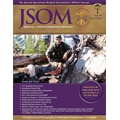Latest Products
Assessment of Trainer Skill to Control Groin-Wound Bleeding: Use of Junctional Tourniquet Models on a Manikin
Kragh JF, Aden JK, Shackelford S, Moore VK, Dubick MA 17(2). 39 - 48 (Journal Article)
Background: The purpose of this study was to assess the skills of trainers using different junctional tourniquet models to control groin bleeding in a manikin. Materials and Methods: In 204 assessments, 17 trainers used four junctional tourniquet models three times each to control simulated hemorrhage. The models included the Combat Ready Clamp (CRoC), Junctional Emergency Treatment Tool (JETT), Abdominal Aortic and Junctional Tourniquet (AAJT), and SAM Junctional Tourniquet (SJT). The criteria of assessment included effectiveness (i.e., control [yes-no]), time to stop bleeding, total blood loss, and bleeding rate. Results: All uses were effective. By model, the results of mean blood loss and time to stop bleeding were different with varying levels of statistical significance: control was worst with the JETT and AAJT, moderate with the AAJT and SJT, and best with the SJT and CRoC. The means sharing a level were not significantly different, but a mean in more than one level was not different from itself. The composite outcome results were 90% good for CRoC and 67% good for JETT, whereas results for the SJT and AAJT were in between, and only the result of the CROC and JETT comparison was significant. The ease of use varied significantly; JETT was more difficult to use and all others were easier. The analysis attributed to the users 19% of the variance of results for time, 44% for blood loss volume, and 67% for bleeding rate. Most users preferred the SJT (53% before and 70% after assessment). Conclusion: Effectiveness was attained by all users with each of the four models of junctional tourniquet. The analysis demonstrated that up to 67% of the variance of performance results could be attributed to the users.


 Español
Español 